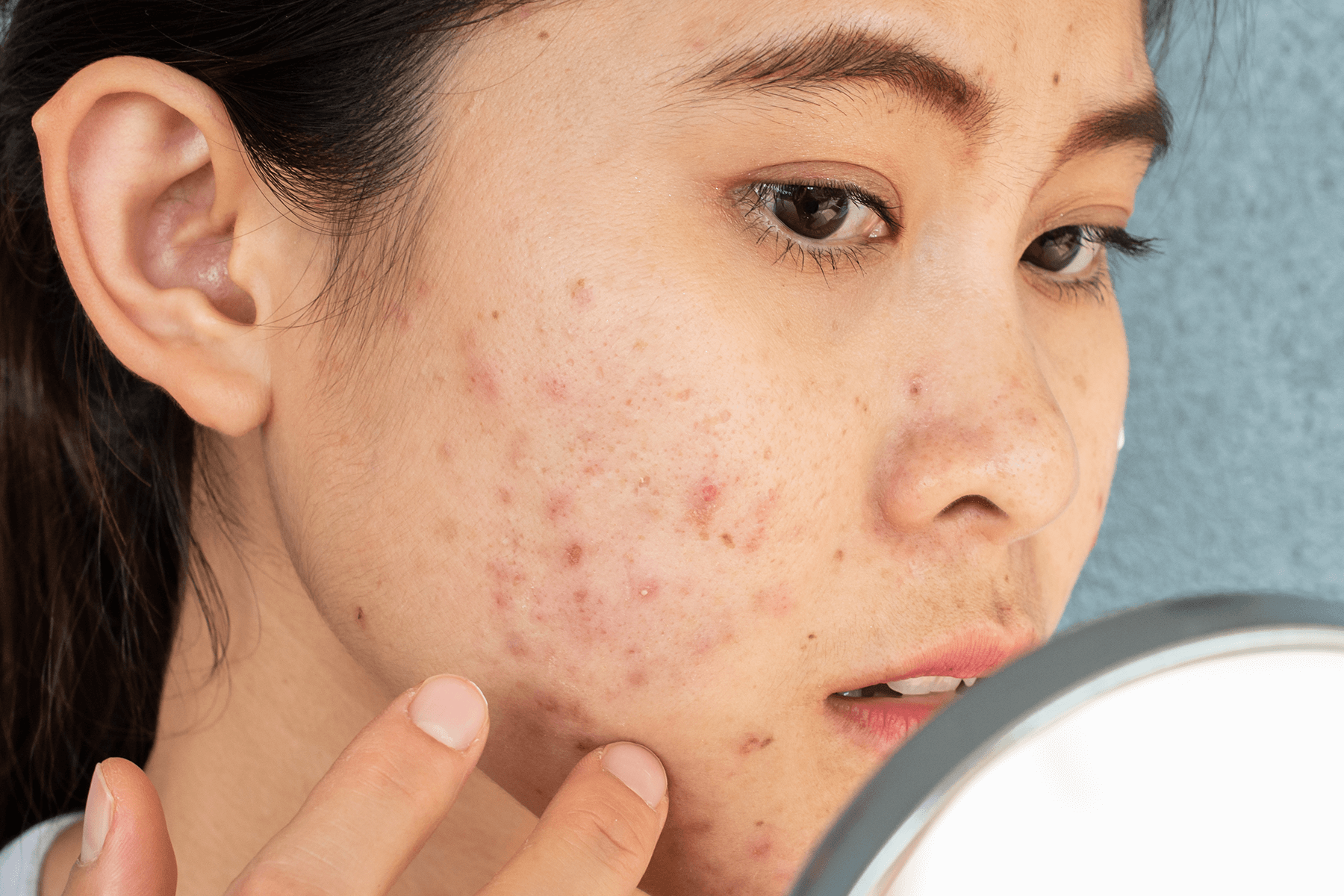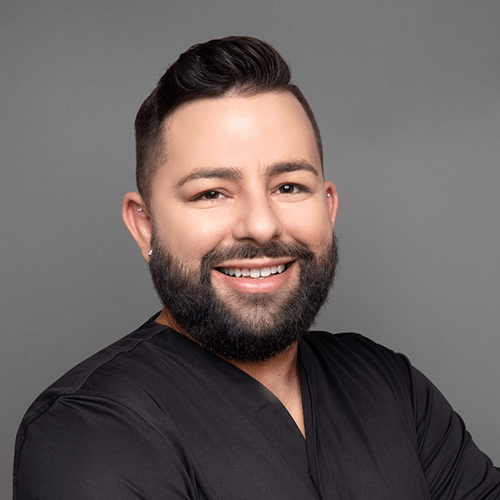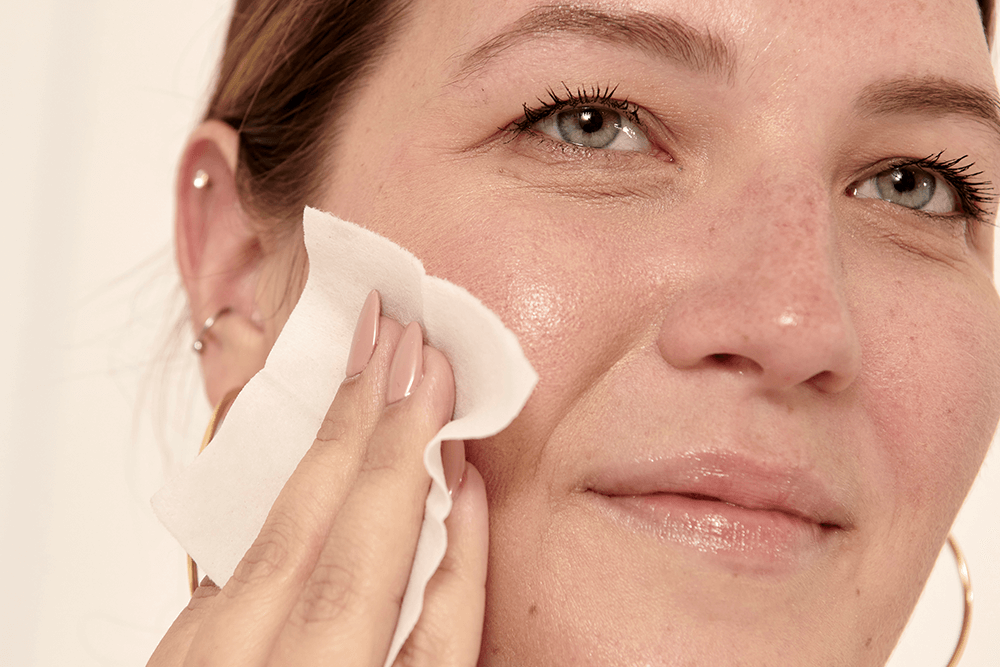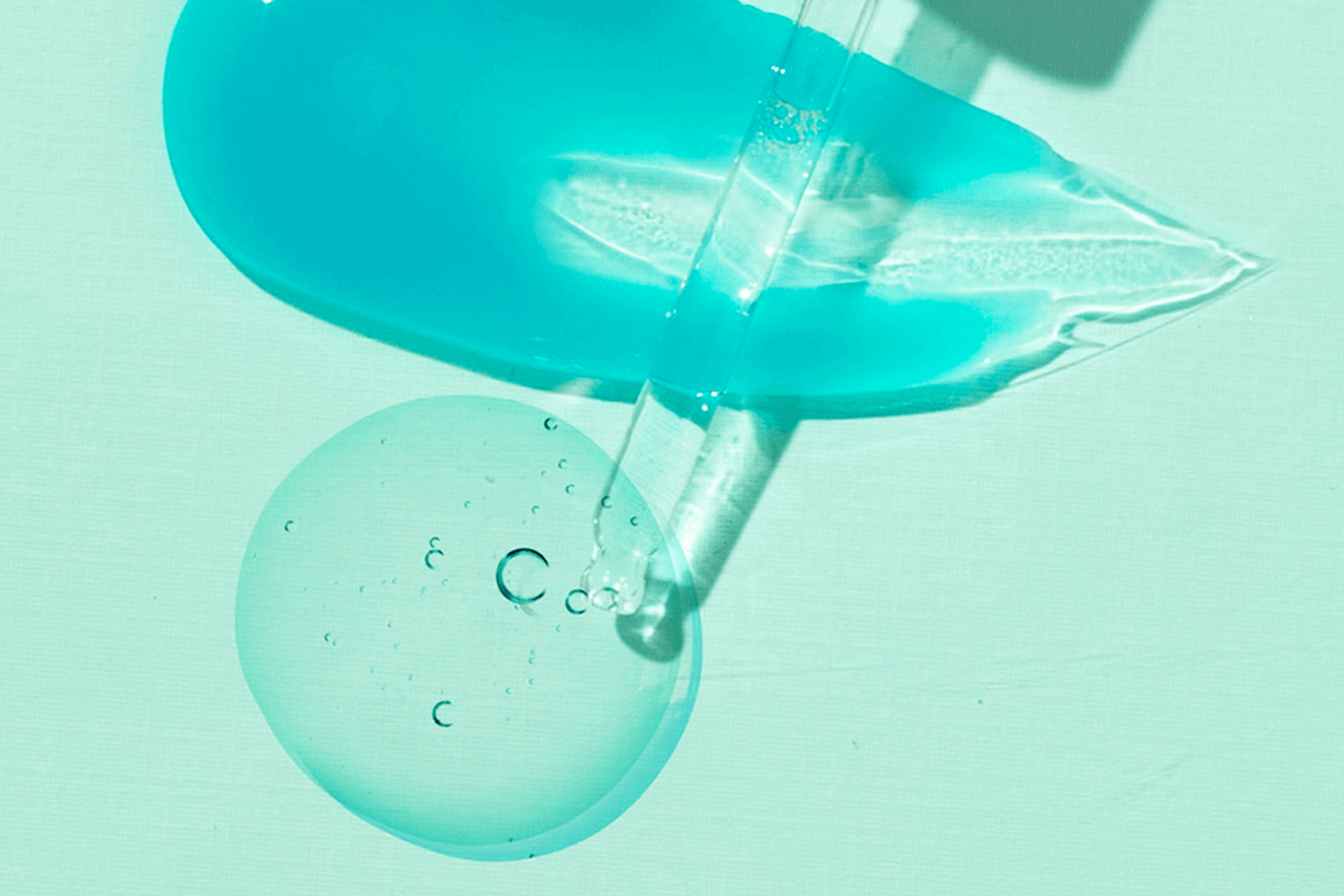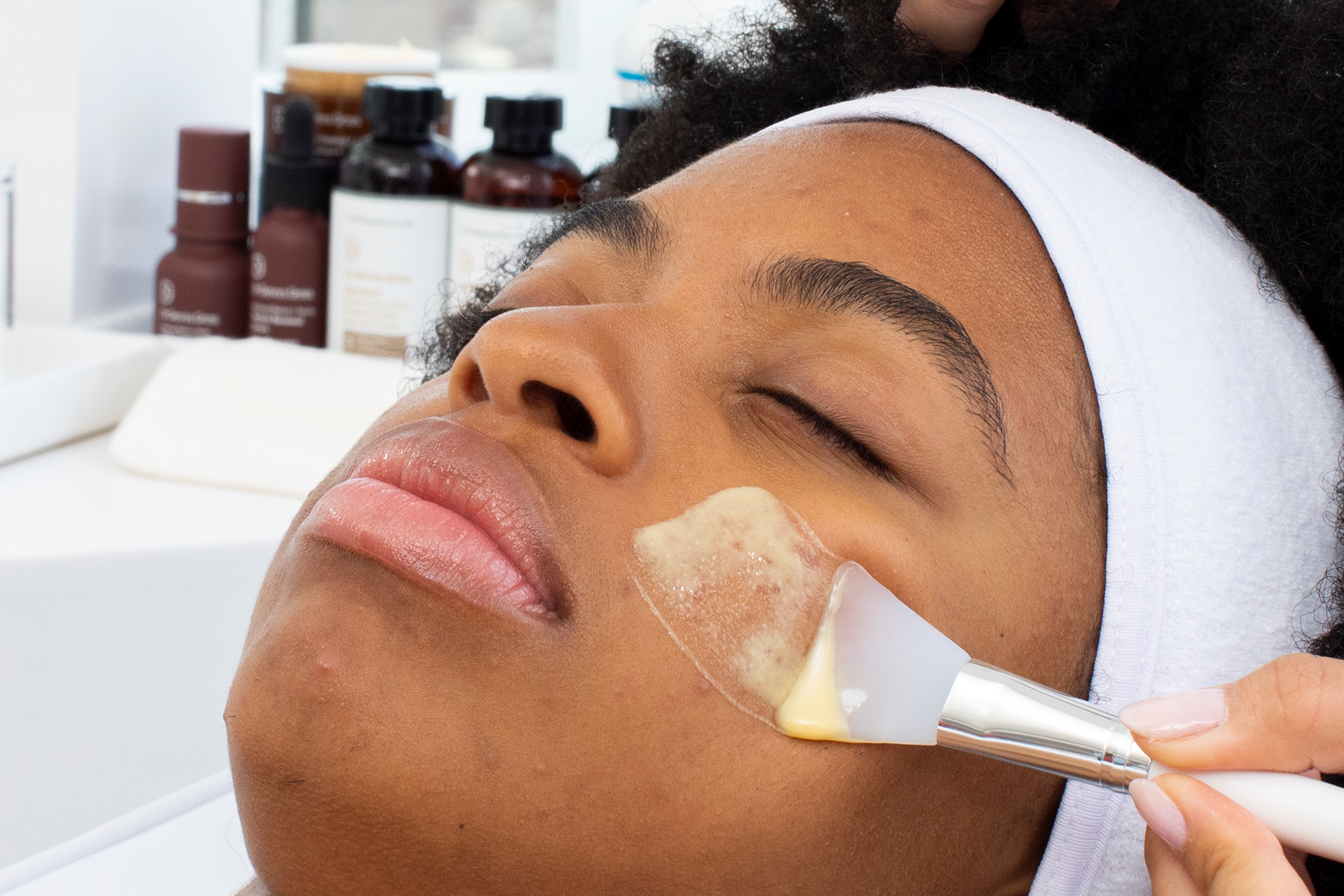The+Source
Acne may be the great equalizer, in that anyone can be afflicted with the condition—old or young (according to the American Academy of Dermatology, 20 percent of newborns develop neonatal acne); male or female (during the teenage years, acne is more common in men; in adulthood, it’s more common in women); and regardless of skin tone (although darker skin tones are more likely to develop hyperpigmentation in conjunction with acne). The truly great news is that acne is treatable, and it’s totally possible to live a life of clear skin. You may be able to get your flare-ups under control with some simple changes in your home routine or you may need to go to a dermatologist in order to get full skin clearance. Regardless, the first step is figuring out that acne is actually your problem. (Other skin conditions can look sneakily similar!)
What is acne?
Acne is a common condition that can develop anywhere you have skin (read: your entire body, from head to heel). It develops when a pore is clogged—either with dead skin cells, oil, P. acnes bacteria, or a combination of all three.
Acne can manifest in any or all of the following four ways:
- Whiteheads
- Blackheads
- Pimples
- Cysts or Nodules
Depending on the type of acne you have, your breakout could be accompanied by redness, inflammation, or pus. (More on this later.)
What acne is not
Acne can often be mistaken for rosacea (which also triggers pimple-esque breakouts and redness), perioral dermatitis (which only occurs around the mouth), or keratosis pilaris (which also produces small, red bumps). Acne often goes hand-in-hand with polycystic ovary syndrome (PCOS). While a dermatologist can help manage the visible side effects of PCOS, the disease itself is a hormonal issue involving cysts in the ovaries that can lead to more health problems, such as diabetes and heart disease, and needs to be treated by a doctor who specializes in that area.
What causes acne?
As previously noted, acne comes from a clogged pore. But why are some people seemingly more predisposed to blocked pores than others? There are a variety of reasons:
Genetics: If either of your parents (or another close blood relative) suffered from deep cystic acne that resulted in scarring, you’re more likely to as well. Chalk it up to the influence our genes have on both our skin type and oil chemistry. Ideally, oil in our skin is a free-flowing entity that travels from the sebaceous gland to the surface of our skin where it’s washed away. But when oil chemistry is compromised, the oil that should be flowing unimpeded gets sludgy and stagnant. And that leads to problems (i.e. clogs).
Hormones: The reason you may experience more breakouts around your period or as you get older is due to the fact that fluctuating hormone levels influence the chemistry of the oil produced by the sebaceous glands. (See above for why this is a thing.)
Medication: Certain drugs list acne as a side effect. Obviously, you don’t want to stop your doctor-prescribed medication just because you think it might be responsible for your breakout. However, you can talk to your prescribing physician to see if there’s an alternate drug you could take instead.
Beauty products: Everything from your hair pomade to your face cream can plug a pore and prevent skin cells from shedding properly. Shampoo your hair regularly and look for skincare items labeled non-comedogenic, non-acnegenic, or oil-free as these will be less likely to block your pores.
Weather: When it’s humid out, oil production goes up. And when the environment is super dry, the skin’s moisture barrier can be compromised, which may make skin more vulnerable to infection.
Stress: While stress alone won’t cause acne, it will exacerbate it. This goes back to hormones. When we’re under stress, we produce more androgen hormones, which stimulate the oil glands.
What are the types of acne and how to treat them
The kind of acne you have (and bearing in mind that you could have more than one type simultaneously) determines how you resolve it.
Non-inflammatory acne
Whitehead
Also known as a closed comedone because it has no visible opening, a whitehead is the result of oil and dead skin cells mixing and plugging a pore.
Blackhead
Often mistaken for dirt, a blackhead (or open comedone) looks the way it does because the oil/skin cell plug is exposed to the air, causing it to oxidize and change color (think of the way a cut-up apple turns brown when left on the kitchen counter).
How to treat non-inflammatory acne
Despite the urge, never pick or squeeze a white- or blackhead. This can lead to more of the same; cause an infection; or increase the risk of a permanent scar. Instead, you want to remove the plug via a topical ingredient that breaks up the clump of dead cells and encourages cell turnover. Top of the list: azelaic acid, salicylic acid, and retinol.
Inflammatory acne
Pimple
Fun fact: A pimple filled with pus is called a pustule (clever, no?); a pimple without pus is known as a papule. Either way, you want to avoid popping or otherwise fussing with one.
Cyst or Nodule
These painful inflammations occur deep within skin. Their primary difference is that cysts contain pus, whereas nodules do not. This type of acne is the most likely to cause permanent scarring.
How to treat inflammatory acne
Inflammatory acne occurs when oil, skin cells, and bacteria combine and fester. Once again, a clog-dissolving topical, such as azelaic acid, salicylic acid, or retinol, is a good idea. However, you’ll also want to kill the trapped bacteria, which is responsible for the redness and inflammation that accompanies this type of acne. While benzoyl peroxide is often suggested as a solution for a P. acnes outbreak, it can irritate skin and lead to post-inflammatory hyperpigmentation. Farnesol, which comes from rose petals, eliminates P. acnes just like benzoyl peroxide. However, farnesol is much gentler and won’t upset your skin. (Conveniently, azelaic acid is also an anti-bacterial and non-irritating.)
While you wait for the previously mentioned ingredients to work their magic, you can reduce redness and swelling with proven skin-soothers like aloe, green tea, and bisabolol (which is derived from chamomile).
In-office option: Cysts or nodules are the types of acne for which it’s a good idea to have a dermatologist you trust (in addition to your home-care program). They can give you a corticosteroid injection or—in more severe cases—a prescription medication.
Always a good idea
No matter what type of acne you have, there are some treatments whose benefits are universal, and having an acne skincare routine catered to your needs should include these key products.
Red or blue light-emitting diodes (LEDs)
Red LEDs reduce inflammation; blue LEDs eradicate P. acnes bacteria. Both types of LED skincare are painless and fast, and neither has downtime.
Chemical peels
All acne starts with a clogged pore. Regular, mild chemical exfoliation will sweep away dead cells, so there are fewer hanging around, waiting to form a plug.
Reasons to start treatment early
As with so many things in life, acne is a problem best nipped in the bud. For one thing, it’s a lot easier to clear in its early stages (scattered whiteheads) than it is once it’s grown into an angry cyst. Also, severe acne is the kind most likely to leave a scar even after it’s gone, so you want to prevent the situation from getting to that point. Even if your acne doesn’t result in a scar, it could create a dark spot (especially in darker skin tones) known as post-inflammatory hyperpigmentation, which would require another (different) course of treatment to resolve. The moral of the story is: Don’t delay beginning your anti-acne regimen as it will save you a lot of heartaches later.
When to expect results
As much as you may wish otherwise, over-the-counter acne treatments take about four weeks to show improvement. (Full skin clearance may require two months or more.) And while you may get impatient after a few days and think about changing your treatment plan in hopes of better/faster results, stay the course. Constant switching confuses your skin and irritates it—which can (ironically) lead to more breakouts. Once your acne is gone, that doesn’t mean you can toss all your treatment products. Prevention is essential, if you want to ensure your acne is gone for good. For that reason, you’ll need to continue with the basic parts of your routine going forward.
